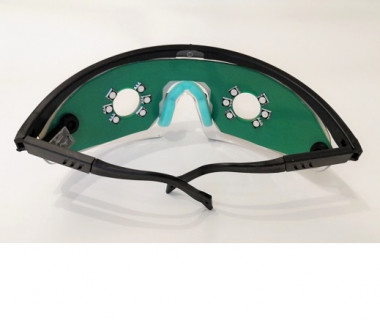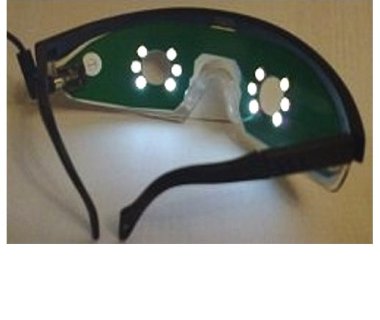Mon—Fri 11:00—17:00 Sat. 12:00—16:00

Description
After payment, a download link will be sent by e-mail.
The danger of a narrowly focused focus of attention is nowhere more evident than in our relationship with our own thinking.
Usually, we identify with the content of our thoughts, and we are not able to realize that we actually represent something much more. But in order to feel ourselves as such, we must first learn flexibility in dealing with our thoughts.
These exercises allow you to explore different ways of relating to thinking and its relationships with other components of awareness - sensory perception, time and space.
The process of thinking, in these meditations, is conventionally regarded as a separate feeling - the same as hearing, sight, or touch, and includes various types of mental content.
We have a conversation with ourselves, or an internal dialogue - it is precisely most people associate it with the word “thinking”. In addition, we can perceive visual images - current or recalled, or a combination of those and others that are created exclusively by our imagination. Feelings can also accompany various forms of thinking. This is certainly not a complete list.
This block contains two meditations that focus on various aspects of interacting with your thoughts.
The result of the lessons will be more flexible thinking, the absence of “sticking” on the same thoughts, the automatic solution to various everyday problems, and, in the long term, a significant reduction in anxiety and getting rid of panic attacks. Which, in the end, is an excellent prevention for cardiovascular and oncological diseases.
Methodology
Important: your task is to let your imagination do all the work very naturally, which, of course, does not require any effort. When your imagination acts completely freely, and you do not force him to imagine something, but simply allow it to happen, then the imagination acts most creatively.
These meditations can be done with both closed and open eyes. If the text says that "you can close your eyes", then this also means that they can not be closed.
In these meditations, I, as in the previous ones, will ask questions: “Could you ...” The questions asked in this form help to circumvent current restrictions, making it possible for the subconscious to find the conditions under which the fulfillment of what has been said becomes possible (although not always the first time).
There will be 15 seconds between questions, and at this time it is necessary to keep attention on the subject of the last question.
It is important to understand that the words “thinking” and “thoughts” in this exercise mean the mood of a person’s attention to their mental content. And when I ask you to establish the physical location of the source of thoughts, please remember that these questions are intended to help you discover how you can facilitate your perception of thinking at the bodily level, rather than suggesting that information processing processes take place in in certain places.
A person successfully uses space to encode information. That is why in all the meditation of presence, space is given special attention. Also, do not be surprised if you find some sources of thinking outside your body. It is quite normal if these sources move, both during the current and subsequent meditations.
If you have any difficulty in imagining a specific image or feeling, let it not bother you. Just let your imagination stay focused on the subject matter, and let your sensation come about in the most natural way.
“Everything is achieved by exercises,” so you do not need to force events somehow. With each meditation, skills accumulate, and all this will come to you in a natural way.
The second meditation is more focused on visualization. For visualization, you are not required to create color surround cinema. Do as you are used to - when you dream, plan something, or describe a trip to your friends, etc.
In these meditations, you need to focus on thoughts, on their free flow, therefore, in the process of these meditations, in principle, there can be no “extraneous thoughts”. Just listen to the instructions - what you need to do with them right now.
These meditations are self-sufficient, but each subsequent meditation in this series of Meditations of Presence is a little more complicated than the previous ones. Therefore, it will still be better if you first complete the full course (21 days) of basic meditation. It will be useful for someone to complete the full course of all previous presence meditations first.
Each meditation in the Presence Meditation series involves some unique aspect of your perception. Therefore, successive classes by everyone (preferably in the order in which they appeared on the site) give a systemic synergistic effect.
Once again, I would especially like to emphasize that meditation is not hard work, but a game. During meditation, keep your inner smile, breathe deeply (effortlessly) and evenly and play with your ideas, as if half asleep, or in dreams.
In order to transfer the effects of presence meditation in everyday situations, during meditation, it is recommended to sit with your back straight or to stand. A recumbent or inclined position, after a certain period of practice, will be ineffective, as this resembles the position in which you are sleeping.
It is optimal to practice twice a day, alternating with meditation, in any order (with a break between them of at least three hours). It should be noted that “twice a day” is a recommendation, not a dogma. In meditation, regularity is very important (especially for beginners), not the amount of time spent.
Water plays an important role in conducting nerve impulses. With general dehydration, which is very common among urban residents, a headache may occur after listening. Therefore, I recommend that before meditation and immediately after drink a glass (well, at least half) of plain clean water.
You can do these meditations without sound accompaniment, during the day - in transport, in lines, when performing any simple activity - washing dishes, floors, cooking, etc.
It is strictly forbidden to engage in meditation while driving, or when controlling any potentially dangerous mechanisms.
The first positive changes will be noticeable after three weeks of regular classes. The consolidation of positive changes will occur in three months.
Duration of meditation: MP5 (1) - 24 minutes, MP5 (2) - 18 minutes.
Using headphones is optional.
Be Healthy and Happy!
Your feedback will be greatly appreciated.









